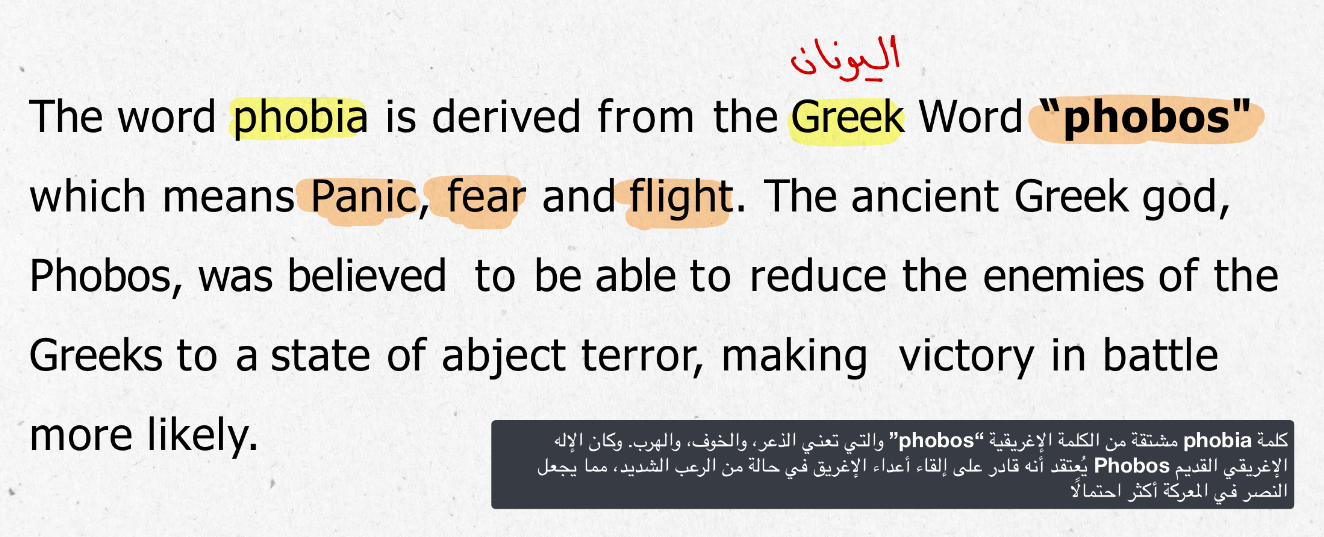5&6 anxiety specific phobia
1/33
There's no tags or description
Looks like no tags are added yet.
Name | Mastery | Learn | Test | Matching | Spaced |
|---|
No study sessions yet.
34 Terms
(-)

is an anxiety disorder
characterized by an intense, irrational fear
of a particular object, situation, or activity.
What is Specific Phobia?
The fear that is posed by specific trigger in specific phobia is disproportionate to the actual danger
How is the fear in Specific Phobia described in relation to real danger?
True
Specific phobias are different from general anxiety (GAD) or normal fears.✅❌
common in childhood,
by early teenage most of these fears are lost
When are simple phobias common, and what usually happens to them?
A few persist,
sometimes they may reappear after a symptom-free period till adult life.
Can simple phobias persist or reappear later in life?
results in a panic attack.
What often happens when a person is exposed to the phobic object?

Into how many subcategories can Specific Phobias be categorized? And what are they?

Mention Signs and Symptoms of Specific Phobia?
Marked fear or anxiety about a specific object or situation
In children: the fear or anxiety may be expressed by crying, tantrums, freezing, or clinging.
What is criteria A of specific phobia according to DSM-5?
The phobic object or situation almost always provokes immediate fear or anxiety.
What is criteria B of specific phobia according to DSM-5?
The phobic object or situation is either actively avoided or endured with intense fear or anxiety.
What is criteria C of specific phobia according to DSM-5?
The fear or anxiety is out of proportion to the actual danger
posed by the specific object or situation and to the sociocultural context.
What is criteria D of specific phobia according to DSM-5?
The fear, anxiety, or avoidance is persistent, typically lasting for 6 months or more.
What is criteria E of specific phobia according to DSM-5?
.The fear, anxiety, or avoidance
causes clinically significant distress
or impairment in social, occupational,
or other important areas of functioning.
What is criteria F of specific phobia according to DSM-5?
The disturbance is not better explained by another mental disorder, including:
Panic-like symptoms (agoraphobia)
Obsessions (OCD)
Traumatic reminders (PTSD)
Separation from home or attachment figures (separation anxiety disorder) (sepAD)
Social situations (social anxiety disorder) (SAD)
What is criteria G of specific phobia according to DSM-5?
True
the exact etiology of specific phobias is not known. ✅❌
may develop due to an association of a
specific object or situation
with
emotions such as fear and panic.
What do some theories suggest about the development of Specific Phobias?
The classical conditioning model
a phobia develops when a fear-provoking event is paired with a neutral event.
What is the most common theory explaining phobia development?
Modeling: a person develops a phobia by observing another’s fear or warnings about a specific object or situation & internalizes that person’s reaction
What is another mechanism by which specific phobias can develop?
Phobias are a defense against anxiety which is provided by id impulses.
According to psychoanalytic theory, what are phobias?
anxiety is displayed toward an object that has a symbolic connection to the id impulses.
How is the anxiety expressed in phobias according to psychoanalytic theory?
all behaviors are learned.
This behavior can be learned through imitating the reaction of others.
What was Behaviorist explanation of phobia?
Traumatic experiences
divorce
illness
death in the family
major life events
starting a new school year.
What environmental factors can trigger the onset of an anxiety disorder?
True
Anxiety and fear can be inherited, similar to inheriting physical traits✅❌
False
Anxiety and fear can’t be inherited, similar to inheriting physical traits ✅❌
They are likely to attend to negative stimuli. يركزون على المثيرات السلبية
According to cognitive explanation, how do anxious individuals perceive stimuli?
They tend to believe that negative events are more likely to occur in the future.
How do anxious individuals view the likelihood of future events?
7-12%
What is the prevalence of Specific Phobia in the population?
often begin in childhood or adolescence,
In children: usually between the ages of 7 and 11 but they can develop at any age.
At what age do Specific Phobias usually begin?
Post-Traumatic Stress Disorder (PTSD)
Personality disorder; such as Avoidant Personality Disorder.
Other Specific Phobias
What are the comorbidity disorders with specific phobia?
Exposure Therapy / Desensitization:
A CBT in which individuals are gradually exposed to the frightening object or event until they become used to it and their physical symptoms decrease.
Flooding
Involves intense exposure to the phobic stimulus to induce habituation.
Social Skill Training
Includes modeling
role-playing
What kind of behavioral therapy is provided for specific phobia?
1. The patient’s commitment to treatment.
2. Clearly identified problems and objectives.
3. Available alternative strategies for coping with the patient’s feelings.
What are The key aspects of successful behavior therapy for specific phobia according?

Mention the medications that are prescribed to specific phobia & anxiety disorders?